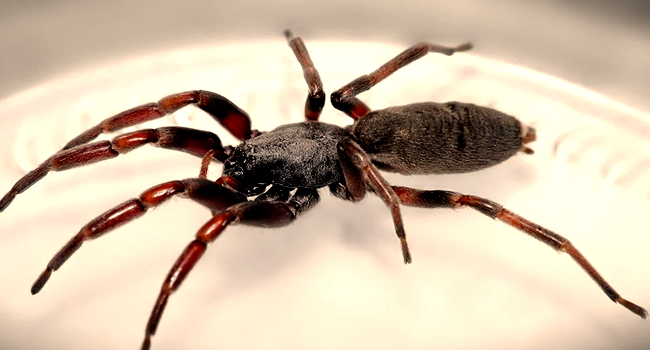Introduction
In the world of arachnids, few creatures are as notorious as tarantulas. These eight-legged wonders have captivated human imagination for centuries, leading to numerous myths and misconceptions. We will examine and dispel some of the most widespread tarantula misconceptions in this post, illuminating the reality about these amazing animals.
The Tarantula Size Misconception
One of the most persistent myths about tarantulas is their size. Many people believe that tarantulas are enormously capable of devouring small mammals. However, in reality, tarantula sizes can vary significantly, with the largest species having a leg span of up to 12 inches. Most tarantulas, though, are far smaller and pose no threat to humans.
Are Tarantulas Deadly?
A prevalent myth claims that tarantula bites are lethal to humans. The truth is that the venom of most tarantula species is not particularly potent. While their bites can be painful, they are not typically dangerous to humans, and fatalities from tarantula bites are exceedingly rare.
Tarantulas and Hair Shooting
Another misconception revolves around tarantulas being able to shoot their urticating hairs as a defence mechanism. While some tarantula species possess these specialized hairs, they don’t “shoot” them. Instead, they release them when threatened, irritating potential predators.
The Lifespan of Tarantulas
Tarantulas are often thought to be short-lived creatures. However, the reality is quite the opposite. Most tarantulas can live for several years, and some species can even reach the ripe old age of 20 years or more.
Misconceptions About Tarantula Speed
Tarantulas are often depicted as fast, agile hunters. Contrary to this belief, most tarantulas are relatively slow-moving creatures. They rely on their impressive size and venom to immobilize prey rather than speed.
Dangerous Tarantulas: The Venom Myth
Another widespread misconception is that all tarantulas are venomous and pose a threat to humans. In truth, while tarantulas do possess venom, it is mainly used to subdue their prey. Most tarantula bites are comparable to a bee sting in terms of their effect on humans.
The Myth of Tarantula Web Building
Not all tarantulas spin webs. Many species are ground-dwelling and need to build traditional traps to capture prey. Instead, they employ various hunting techniques, such as ambushing their prey.
The Tarantula as a Symbol of Fear
Popular culture has often portrayed tarantulas as the stuff of nightmares. However, these arachnids play essential roles in ecosystems and have more to fear from us than we do from them.
Tarantulas and Molted Exoskeletons
A common myth is that tarantulas shed their exoskeletons when they grow, similar to how snakes shed their skin. While tarantulas do moult, it is an intricate process that involves emerging from their old exoskeleton, which leaves them vulnerable to predation.
Tarantula Domestication
It is a common myth that tarantulas can be easily tamed and kept as pets. While some tarantula species are kept as pets, they require specific care and handling to thrive in captivity.
The Myth of Tarantula Communication
There is a myth that tarantulas communicate using intricate dances or movements. In reality, their communication methods need to be understood and involve vibrations and pheromones.
The Misconception of Allergic Reactions
Some people believe that tarantula encounters can lead to severe allergic reactions. While tarantula hairs can irritate, severe allergic reactions are exceedingly rare.
Tarantula Territorial Behavior
A common myth suggests that tarantulas are territorial and aggressive toward other members of their species. In truth, they are often solitary creatures that only come together for mating purposes.
The Myth of Web Patterns
Many believe tarantulas build intricate geometric patterns in their webs, much like orb-weaving spiders. However, most tarantulas, as mentioned earlier, do not spin traditional webs.
Tarantula Conservation Efforts
It’s important to note that some tarantula species face threats in the wild due to habitat destruction and illegal pet trade. To save these amazing animals and their natural environments, conservation initiatives are being carried out. We can aid in the conservation of tarantulas and spread awareness of the value of protecting these unusual arachnids by learning the truth about them and busting common misconceptions.
The Fascinating World of Tarantulas
Beyond the myths and misconceptions, tarantulas have a remarkable place in the natural world. They come in various shapes, sizes, and colours, showcasing incredible biodiversity. The tarantula’s life cycle, from hatching to moulting and maturing, is a fascinating process to explore. Additionally, their role as predators in ecosystems helps control populations of various insects.
A Glimpse into Tarantula Behavior
Tarantulas exhibit intriguing behaviours that can captivate the curious observer. From how they hunt and capture prey to their mating rituals, understanding their behaviour can be a source of wonder. Each tarantula species has its unique traits and habits, making them a subject of great fascination for technology enthusiasts.
Tarantula Enthusiasts and Conservationists
Many individuals worldwide are passionate about tarantulas and actively contribute to their conservation. Tarantula enthusiasts, researchers, and conservationists work tirelessly to learn more about these creatures and protect their natural habitats. Some even establish breeding programs to ensure the survival of endangered species.
The Importance of Education
Educational programs and resources are essential to help people better understand tarantulas. Dispelling myths and providing accurate information about these arachnids can reduce unwarranted fear and encourage coexistence with these crucial creatures.
Tarantulas in Popular Culture
While tarantulas are often portrayed as menacing in movies and literature, they have also found their way into popular culture more positively. In some cultures, tarantulas are revered or have symbolic significance. Their captivating appearance has inspired artists and designers, leading to various artistic representations and even fashion statements.
Tarantula as Bioindicators
Some species of tarantulas play an essential role as bioindicators, signalling the health of their ecosystems. Their presence or absence can reflect the state of the environment, including the availability of prey species and the quality of their habitat. This highlights the interconnectedness of all species within an ecosystem and underscores the importance of preserving these habitats.
The Versatility of Tarantula Venom
Tarantula venom is a complex mixture of molecules, and while it is not typically harmful to humans, it is a potent weapon for subduing prey. Researchers have shown an increasing interest in studying tarantula venom due to its potential medical applications. Some compounds found in tarantula venom may hold the key to developing new drugs, such as painkillers and treatments for neurological disorders.
Tarantula Conservation Challenges
Despite their remarkable attributes, tarantulas face various conservation challenges. Their numbers are in danger because to habitat degradation, the illicit pet trade, and climate change. Conservationists are working diligently to protect these creatures by preserving their natural environments, combating illicit trade, and raising awareness about the importance of tarantula conservation.
The Future of Tarantulas
The study of tarantulas is a dynamic field with ongoing discoveries and evolving perspectives. Researchers are continually unravelling the mysteries surrounding these arachnids, shedding light on their behaviours, biology, and role in the world’s ecosystems. As our understanding of tarantulas deepens, so does our appreciation for the unique beauty and significance of these creatures.
The Tarantula’s Place in Nature
In the grand tapestry of nature, tarantulas occupy a crucial niche. They help control insect populations, participate in intricate ecosystems, and inspire curiosity and wonder in those who study and appreciate them. Separating facts from myths about tarantulas allows us to view them in a more accurate and holistic light.
Conclusion
In conclusion, it is essential to dispel the myths and misconceptions surrounding tarantulas. These intriguing creatures play vital roles in various ecosystems and are not the fearsome monsters popular culture often portrays. Gaining knowledge about the truth about tarantulas can help people appreciate the intriguing and varied world of arachnids on a deeper level.
FAQs
-
Are tarantula bites deadly to humans?
No, tarantula bites are not typically deadly. While they can be painful, fatalities are exceptionally rare.
-
Can tarantulas shoot their urticating hairs?
Tarantulas do not “shoot” their urticating hairs but release them when threatened as a defense mechanism.
-
Do all tarantulas build webs?
No, not all tarantulas build webs. Many are ground-dwelling and use different hunting techniques.
-
How long do tarantulas live?
Most tarantulas can live for several years, with some species reaching ages of 20 years or more.
-
Can tarantulas be kept as pets?
While some tarantula species are kept as pets, they require specific care and handling to thrive in captivity.







